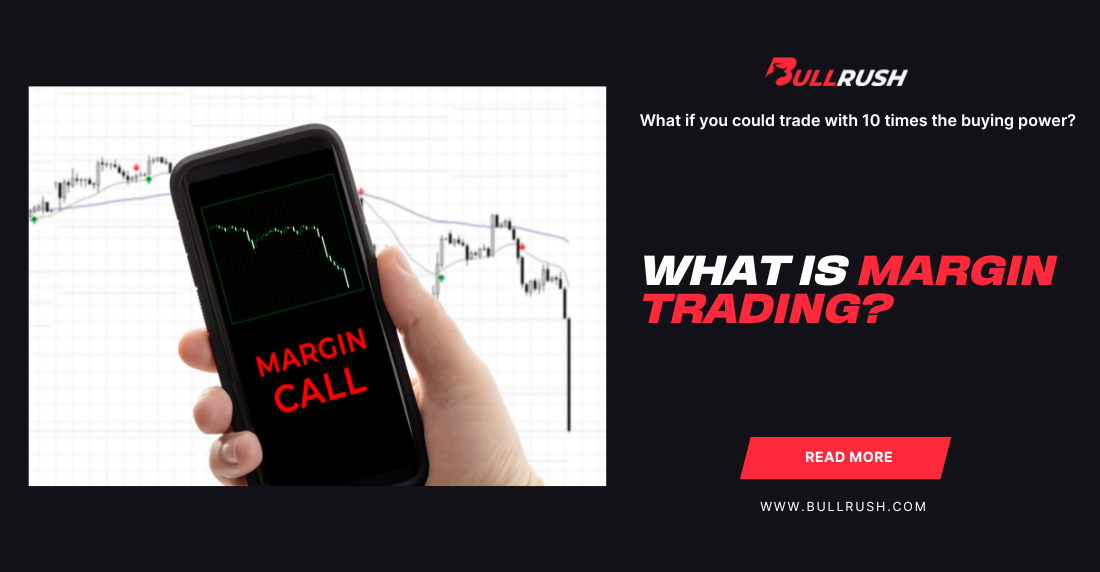
What is Margin Trading?
What if you could trade with ten times the buying power you have right now?
That’s the tempting promise of margin trading: a tool that lets traders amplify their positions and, potentially, their profits. But as every seasoned trader knows, leverage cuts both ways. It can turn small wins into home runs… or small mistakes into costly lessons.
In this article, we’ll break down what margin trading is, how it works, and how to use it strategically, not emotionally, to stay in control.
What Is Margin Trading?
At its core, margin trading means borrowing money to trade. Instead of relying solely on your own capital, you borrow funds from a broker or platform to open larger positions.
Think of it as adding some serious horsepower to your trades. You’re still in the driver’s seat, but every move hits harder, every turn demands focus. So, you have to nail the timing, master the strategy in order to dominate. And if you slip up, the consequences hit just as fast.
Imagine you deposit $1,000 on a trading platform and use 10x leverage. Now you’re controlling a $10,000 position. A 5% price move in your favor means a 50% profit. But if the market moves 5% against you, your broker steps in fast; your position gets liquidated to cover the losses.
Although margin trading increases results, it also necessitates strategy, discipline, and risk awareness. It would be like operating a race car without brakes.
Tip: To help avoid mistakes, always treat margin as a tool, not a shortcut. Respect leverage, and it becomes an ally. Abuse it, and it’ll expose every flaw in your trading psychology.
How Margin Trading Works: The Mechanics
When you open a margin trade, you’re essentially putting down a good-faith deposit (your margin) and borrowing the rest from the broker. The platform sets a maintenance margin, a minimum amount of equity you must maintain to keep your position open.
If your trade moves against you and your equity drops below that threshold, you’ll get a margin call: a signal to deposit more funds or risk liquidation.
Different markets have different leverage limits:
- Forex and crypto platforms often allow leverage from 5x to 100x.
- Stock brokers are more conservative, usually capping leverage at 2x.
Higher leverage doesn’t mean higher skill. It means higher risk. So what smart traders do is adjust their leverage based on volatility, liquidity, and conviction.
Tip: Always make sure to check your platform’s margin requirements and liquidation rules. Why? Because knowing where the edge is lets you avoid falling off it.
The Allure, and the Trap, of Leverage
There’s no denying the appeal of margin trading. You can:
- Multiply your returns without increasing your initial capital.
- Take advantage of short-term price moves.
- Diversify positions while keeping capital free.
But there’s a catch: leverage amplifies both profit and loss.
Imagine a trader who goes long Bitcoin at $60,000 with 10x leverage. If BTC rises to $63,000, a 5% gain, the trader doubles their money. But if BTC drops to $57,000, a 5% loss, they’re wiped out.
That’s the double-edged sword of margin: it magnifies your skill if you’re disciplined… and your downfall if you’re not.
Tip: Use low leverage until you can consistently manage risk. Even pros rarely go above 5x. The goal is longevity, not lottery wins.
Margin Trading Strategies That Actually Work
Margin trading isn’t about swinging for the fences. It’s about precision. The best traders use leverage strategically: to enhance strong setups, not chase random spikes.
Here are a few smart approaches:
1. Scalp Trading
Use small leverage (2x–5x) for quick, intraday moves. Tight stop-losses, fast exits. Speed and discipline are key.
2. Swing Trading with Controlled Leverage
Leverage positions only when the setup aligns with higher-timeframe trends. Combine margin with sound technical and fundamental analysis.
3. Hedging
Use margin to open offsetting positions. For example, shorting a correlated asset to protect an open long. It’s leverage with a purpose.
4. Gradual Scaling
Instead of going all in at once, add to winning positions with moderate leverage. Compound your advantage safely.
Common Margin Mistakes to Avoid
Even experienced traders fall into leverage traps. The biggest ones include:
- Over-leveraging: Using too much size on uncertain setups.
- Ignoring stop-losses: Hoping instead of managing risk.
- Trading emotionally: Revenge trading after a margin call.
- No plan: Using margin without understanding your liquidation price.
Margin trading is a mental game. The moment greed or fear takes over, leverage punishes you.
Tip: Treat every margin trade like a professional would: define your risk before you enter, never after you’re losing.
Why Margin Trading Appeals to Modern Traders
In the age where everything can be accessed instantly and markets run 24/7, margin trading fits the mindset of active, data-driven traders. It rewards precision and punishes recklessness, a perfect match for those who value control, timing, and strategy.
But the real beauty of margin trading lies in how it forces growth. You start to see the market differently, not just as price action, but as a balance between power and control. You learn to size properly, manage emotion, and respect volatility.
Margin trading, done right, is a training ground for professional-level discipline.
The BullRush Edge
At BullRush, we believe trading should be as real as it gets: transparent, competitive, and skill-based. Whether you’re exploring forex, crypto, or futures markets, margin mechanics play a role in every serious trader’s journey.
Our platform gives traders a place to practice, compete, and refine their trading strategies in market environments, without falling into the over-leverage trap.
If you want to test your trading edge, build consistency, and see how your strategy performs under real conditions, join a BullRush competition today.
Trade smart. Trade strong. Trade like it matters.
Final Thoughts: Leverage Is a Mirror
Margin trading doesn’t create skill. It reveals it. It magnifies your habits, your patience, and your ability to manage chaos. The secret isn’t mastering leverage; it’s mastering yourself.
Used wisely, margin becomes a gateway to faster growth and sharper precision. Used recklessly, it becomes a hard teacher. The choice is always yours.
FAQs
Q: What’s the difference between margin trading and leverage trading?
They’re basically the same. Margin is the borrowed capital you use to apply leverage to your trades.
Q: Is margin trading suitable for beginners?
Not at first. Beginners should learn spot trading and risk management before introducing leverage.
Q: Can I lose more than my initial investment?
On some platforms, yes. Always trade on platforms with clear liquidation rules to prevent negative balances.
Q: What’s a safe leverage level?
2x–5x is generally safe for most traders. Anything beyond that magnifies risk dramatically.



